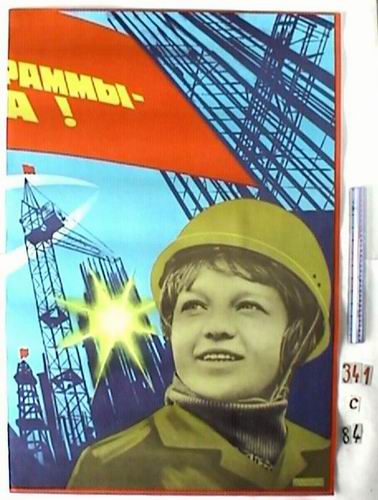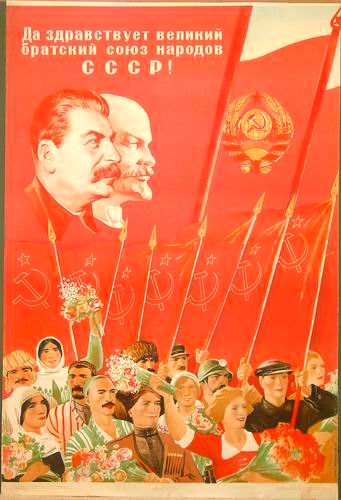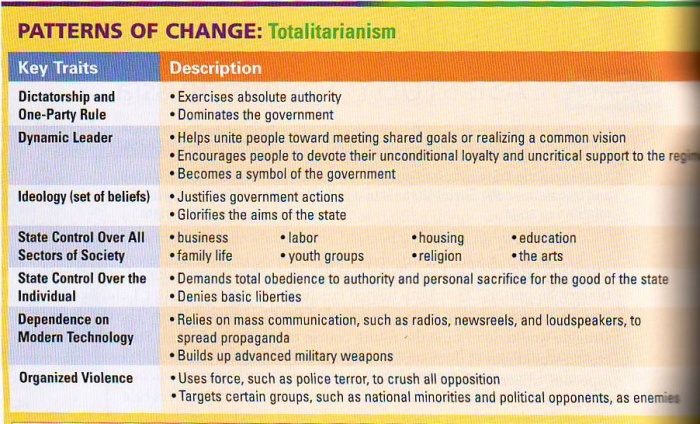Russian Revolution Lesson Group Project
From ThePlaz.com
Good job!
Good job to all my group members. I think we had a fun time despite the fact that the game didn't work as well as we planned (No more Hershey kisses!!!) We caught a lot of people not paying attention by Mr. Smith seemed to remain interested.
Grade:110/115
3 points off for not connecting to the "big Ideas" which I planned to do but class was over. 2 points off for not saying who did what on grade sheet. Overall "Great effort and work" See the actual grade sheet
As part of a group project with 4 other members (Dan, Jamie, DJ, and Cathy), we need to teach a 10 minute lesson on a topic from the Russian Revolution for Western Civ class on 5/31/2006. See Mr. Smith's Instructions posted here
Our group chose the topic D:Civil War in Russia, Lenin Restores Order, and Totalitarianism in Russia: Joseph Stalin
Contents |
Lesson Plan (Cathy)
Basically
- Short 3 min movie or skit (written by Dan)
- PowerPoint Presentation
- Short 10 qu. quiz prepared by Jamie
- Special surprise Closing Activity (DJ)
- Hand out outline (text closely following PowerPoint)
Actually
A Microsoft Word version of this work is available here: Image:Russian Rev Lesson Plan.doc
Goals
Today, students will learn about:
- Causes and effects of the civil war in Russia
- V.I. Lenin and his actions to restore order
- Lenin’s successor: Joseph Stalin
- Totalitarianism
- Stalin’s economic and agricultural revolutions and the resistance towards them
- The overall effect, both positive and negative, Joseph Stalin had on Russia and the USSR, as well as the world
Opening Activity:
2 Historical Short Films about Russia’s Civil War and Lenin’s actions to restore the country
- 1- Civil War in Russia - http://theplaz.com/static/Russian%20Revolution%20Lesson%20Group%20Project/1-%20Civil%20War%20in%20Russia.wmv
- 2- Lenin's Return to Order - http://theplaz.com/static/Russian%20Revolution%20Lesson%20Group%20Project/2-%20Lenin's%20Return%20to%20Order.wmv
Guided Instruction:
PowerPoint Presentation on Joseph Stalin and his rule in Russia, as well as the effects of Stalin - http://theplaz.com/wiki/images/Stalin_Section_SlideShow.ppt
Independent Practice:
Worksheet containing questions and answer based from the lesson – http://theplaz.com/wiki/index.php?title=Russian_Revolution_Lesson_Group_Project#Quiz_.28Jamie.29
Closure:
- Activity/Game- Who wants to be a “Kissenair?”; based off the widely popular television game show “Who Wants to be a Millionaire”
- Conversation with class to connect back to main ideas:
- (a.) Decisions made by leaders determine their cycle of power.
- (b.) Dissatisfaction with the current structure of society can lead to political, social, and economic change.
- (c.) Leaders hold world views that can influence the social, political, and economic direction of a society.
Movie or Skit (Dan)
We found these movies on the internet. We will show them in the beginning.
Outline/PowerPoint
Civil War and Lenin (Cathy)
Upon finding that the movies we found contained most of the information in Cathy's PowerPoint, we decided to nix the Civil War and Lenin PowerPoint. Cathy still wrote an outline to handout to the class, but she does not want me to post it here.
Stalin and Totalalitarianism (Plaz)
Final Draft of PowerPoint:
![]() A PowerPoint slideshow of this work is available here: Image:Stalin Section SlideShow.ppt
A PowerPoint slideshow of this work is available here: Image:Stalin Section SlideShow.ppt
Powerpoint Media
Whole Project Outline
![]() A PDF version of this work is available here: Image:Russian Rev Outline Handout.pdf
A PDF version of this work is available here: Image:Russian Rev Outline Handout.pdf
Civil War in Russia, Lenin Restores Order, and Totalitarianism in Russia: Joseph Stalin
Cathy's Part Censored
- Leader V.I. Lenin died in 1924 launching power struggle to see who would be the next leader
- Leon Trotsky and Joseph Stalin were the two rivals competing for the top position.
- Both had helped in the revolution and in creating a Soviet state
- The winner in this struggle was Joseph Stalin – was cold and ruthless
- Stalin exiled Leon Trotsky in 1829
- Stalin was now a dictator with absolute power
- Global Focus
- Stalin was focused on Russia, unlike Lenin and Trotsky who focused on a worldwide Communist Revolution
- Stalin aimed to perfect “Socialism in one country” and turned it into a totalitarian state
- Totalitarianism
- Where the government takes complete, central control over every aspect of public and private life
- Leaders such a Stalin appear to provide a sense of security and direction for the future
- It challenges the basic values of democratic states and the thoughts of the Enlightenment -reason, freedom, human dignity, and the worth of the individual
- Police State
- Not even the slightest bit of dissent was allowed, before the secret police arrested you
- You could be arrested for anything, at anytime.
- If there was even the slightest suspicion you were planning to overthrow the government-Gone!
- If you or your factory failed to meet your quota, Bye, bye
- If you were a police man and didn’t arrest enough criminals, you should be afraid of the knock on your door
- Stalin arrested almost every Bolsheviks who participated in the revolution as well as almost every leader in Stalin’s government for “crimes against the Soviet state” - Great Purge
- By now Stalin had complete control of the USSR
- However, at the cost of 8 to 13 million deaths
- Stalin became more powerful any of the previous Russia czars
- Propaganda
- Stalin (and totalitarian governments) used Propaganda to spread their ideas
- Peasants were taught the ideals of communism
- Youth-groups “brainwashed” kids
- Sponsored socialist realism art
- Smiling workers doing their part
- Total Censorship of Media
- Religious Persecution
- State encouraged (um, demanded) atheism
- Museums showing fallacy of religion
- Police destroyed churches and synagogues
- Persecuted religious leaders
- But people still clung to their faiths
- Russian Orthodox Church = major religion
- Command Economy
- Stalin changed Lenin’s NEP to an economy where the state had complete control
- Political leaders identified economic needs and found ways to fulfilled them
- Stalin also wanted to catch up to Great Britain and Germany, as well as the rest of Europe, in industrialization
- Unlike democratic economic change, Stalin pushed this along at great costs to individuals
- Stalin changed Lenin’s NEP to an economy where the state had complete control
- First Five Year Plan - 1928
- The government would take drastic steps promote rapid industrial growth and strengthen military defenses (remember just lost WWI)
- Set impossibly high quotas (or numeric goals) for the output of steel, coal, oil, and electricity
- Workers Poor Lives
- The government controlled every aspect of worker’s lives
- Government chose the jobs, the hours you worked
- Food and supply shortages from rapid industrialization
- The Secret Police enforced all there rules
- Ready to imprison anyone for breaking them
- This forced labor had a gigantic toll on Soviet families and lives
- The Agriculture Revolution
- The Agriculture Revolution was very successful, but far more brutal
- In 1928, Stalin began to seize 25 million private farms and combine them into huge collective farms. Peasants worked on these farms.
- The Agriculture Revolution - Revolution
- The Peasants were angry because they had just won their land from the nobles.
- They revolted fiercely by destroying crops and livestock
- Stalin struck back with his secret police sending peasants to work at the threat of death
- Between 5 and 10 million peasants were killed with millions more sent to Siberia.
- The kulaks, wealthy peasants also revolted and their entire class was sent to death or work camps
- Success! - By 1938, 90% of peasants were now working on collective farms.
- In 10 years:
- Wheat production was doubled due to collective farming
- Electricity production was up 800%
- Steel production increased from 4 to 18 million metric tons
- The USSR was becoming a major industrial power
- In the Long Run
- Stalin responsible for Russia’s industrialization
- Russia was able to stand up to Germany in WWII
- Standards of living ultimately rose; people embraced science and technology
- Stalin changed Russia from an agricultural backwater into a world-power industrial giant
- But the people paid the price for these gains
Quiz (Jamie)
1. When was Lenin’s New Economic Policy launched, and what did it entail?
2. What did Lenin rename Russia in 1922?
a) United States of Russia c) Russian Union
b) Union of Soviet Socialist Republics d) Russian Soviets United
3. Who was the leader after Lenin died?
a) Leon Trotsky b) Joseph Stalin
4. When the government takes complete, central control over every aspect of public and private life, it is called _________________.
5. The police went easy on the people, and minor crimes were ignored. T or F
6. Why do you think Russia strongly discouraged religion?
7. What did the First Five Year Plan aim to promote?
8. The _______________ ______________ was very successful but much more brutal than the industrial revolution.
9. What were the huge, government-created farms called?
a) Collective farms c) Cotton Gins
b) Agricultural farms d) Independent Farms
10. Do you think the successful results of Stalin’s actions were worth the hardships to the people?
Special surprise Closing Activity (DJ)
Bonus: Totalitarianism Chart
Here is the totalitarianism chart I scanned from our textbook.
Pictures









